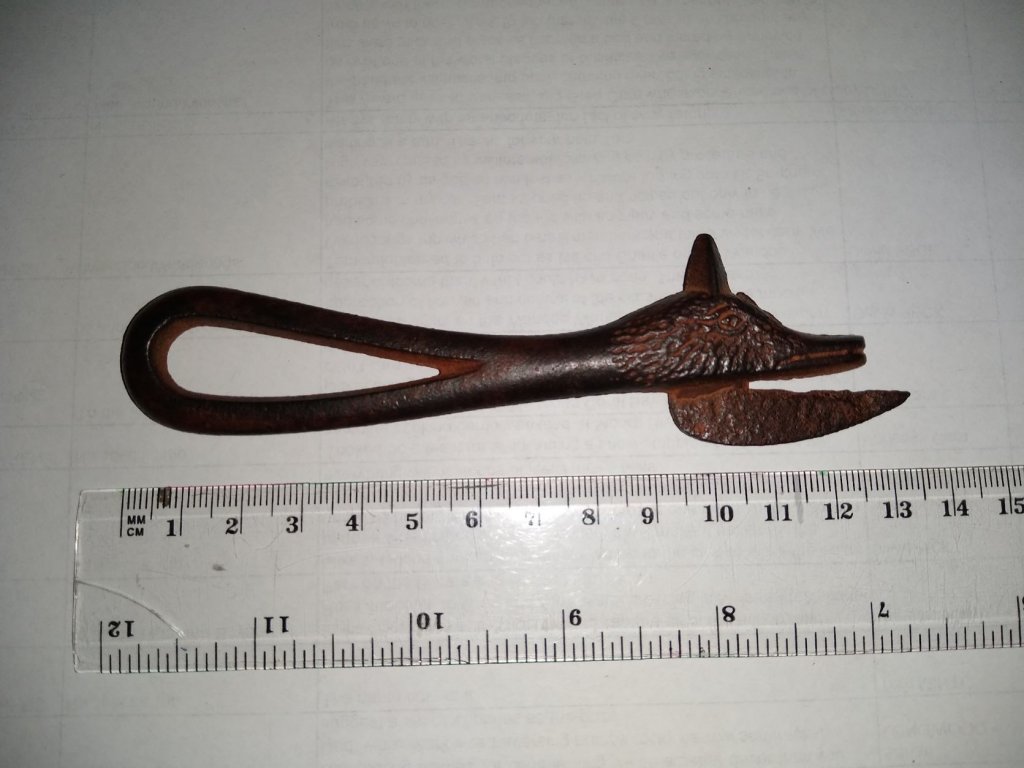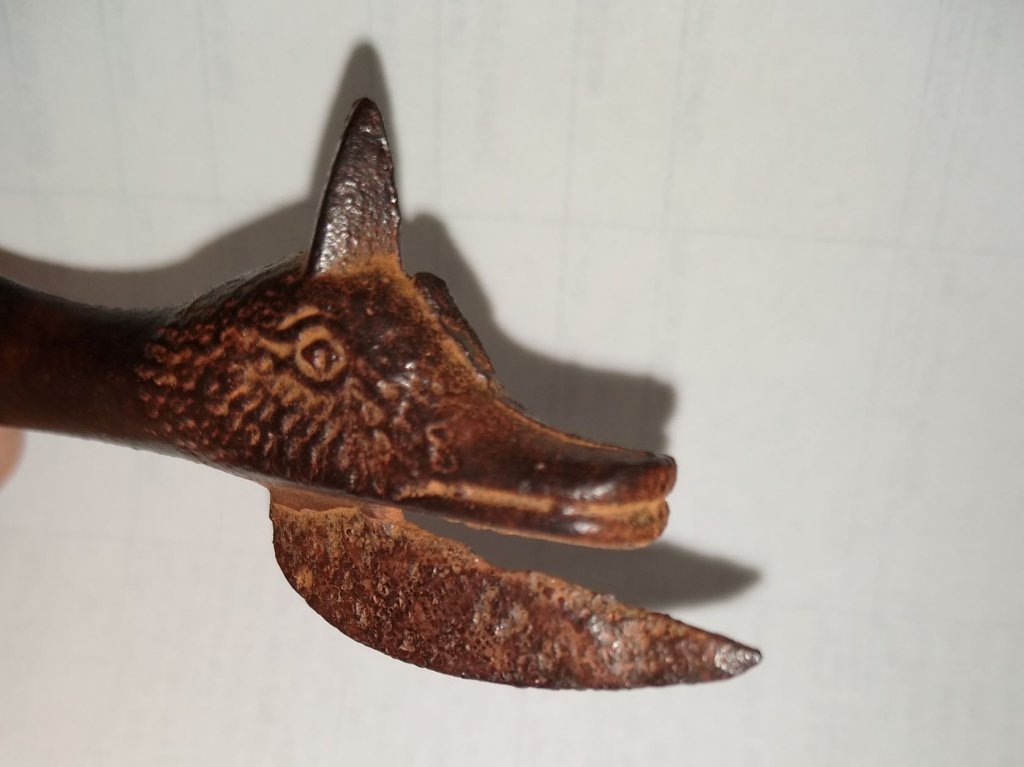Pecky
Newbie
G'day all,
I found this can opener about 10km west of Cue, in Western Australia, whilst metal detecting and I reckon its probably worth more than the 0.21 gram nugget that I found after 10 days there

I have found many images of Bully Beef can openers on the internet which seem to be a simialr style. But I was only able to find one image with a Ducks head, and it was on an auction site in the UK that you needed to log onto.
I have tried an Australian Prospecting Forum and local historical society, and neither were unable to help me.


It weigh 66 grams, is 11mm thick, and 130.5mm overall. The beak to handle is 122.5mm.
It is magnetic and I'm assuming cast iron as there appears to be a casting mark on the forehead and a line running down the centreline of the beak.
Any ideas on where to look would be appreciated.
thanks
David
I found this can opener about 10km west of Cue, in Western Australia, whilst metal detecting and I reckon its probably worth more than the 0.21 gram nugget that I found after 10 days there

I have found many images of Bully Beef can openers on the internet which seem to be a simialr style. But I was only able to find one image with a Ducks head, and it was on an auction site in the UK that you needed to log onto.
I have tried an Australian Prospecting Forum and local historical society, and neither were unable to help me.


It weigh 66 grams, is 11mm thick, and 130.5mm overall. The beak to handle is 122.5mm.
It is magnetic and I'm assuming cast iron as there appears to be a casting mark on the forehead and a line running down the centreline of the beak.
Any ideas on where to look would be appreciated.
thanks
David







